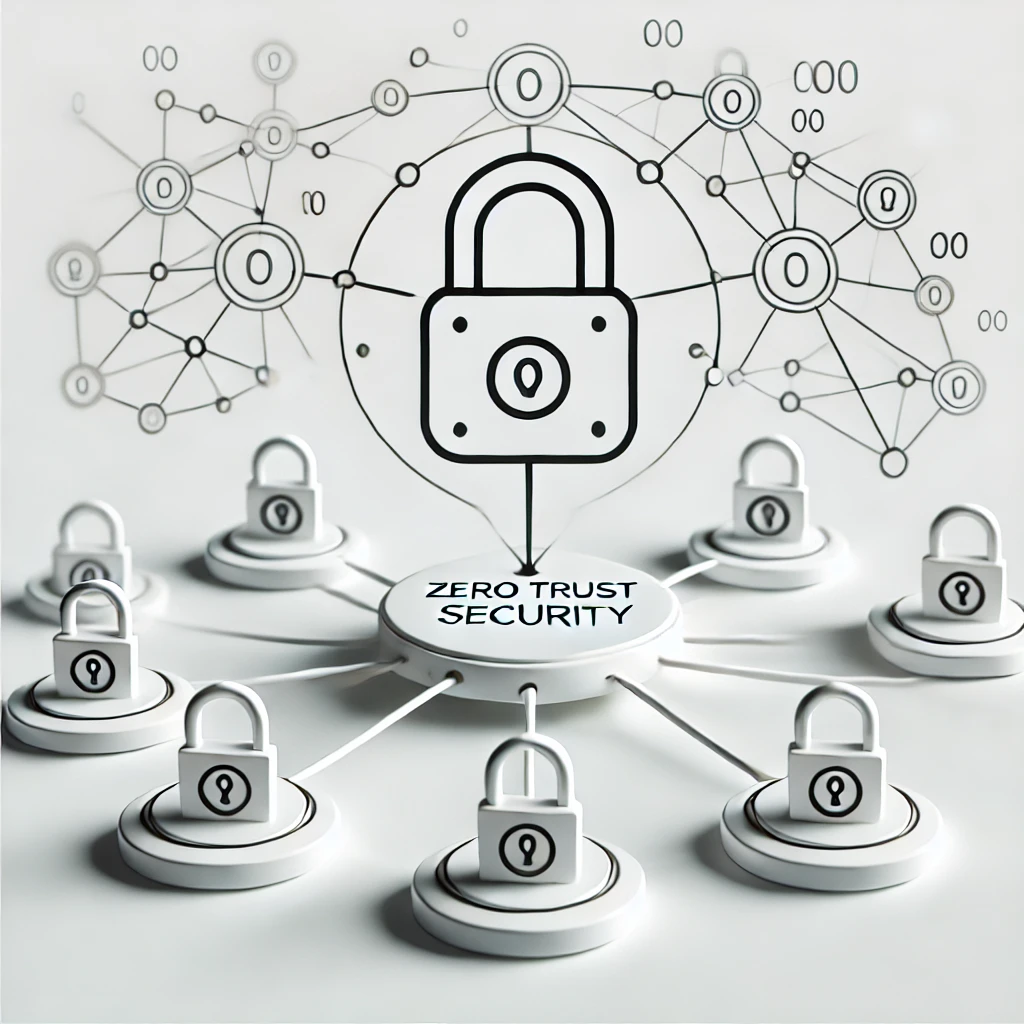A Comprehensive Guide to Understanding Zero Trust Security
In an era where online security is a growing concern, password managers have become essential tools for protecting personal and professional digital assets. With cyber threats on the rise, the need for robust and reliable password managers has never been greater. As we step into 2025, staying ahead of potential security breaches requires leveraging the best tools available. In this comprehensive guide, we will explore the top five password managers of 2025, their features, benefits, and why they stand out as essential components of cybersecurity.
What is Zero Trust Security?
Zero Trust Security is a cybersecurity model that operates on the principle of “never trust, always verify.” Unlike traditional security architectures, which rely on trusted internal networks and untrusted external networks, Zero Trust assumes that every user, device, and network is a potential threat.
Core Idea:
Zero Trust does not automatically trust anything inside or outside the network. Instead, it continuously verifies the identity and trustworthiness of every entity requesting access, regardless of location.
The Evolution of Zero Trust
The concept of Zero Trust was first introduced by John Kindervag, a Forrester Research analyst, in 2010. It gained traction as organizations grappled with:
- Increased Cloud Adoption: The shift to cloud computing dissolved traditional network perimeters.
- Remote Work: The COVID-19 pandemic accelerated remote work, complicating traditional access control models.
- Advanced Threats: Sophisticated cyberattacks such as ransomware, phishing, and insider threats rendered legacy systems ineffective.
Core Principles of Zero Trust
Zero Trust is built on three foundational principles:
1. Verify Explicitly
Always authenticate and authorize users, devices, and applications based on:
- User identity
- Device state
- Geolocation
- Behavioral analysis
2. Least Privilege Access
Provide users and devices only the minimum level of access necessary to perform their tasks. This reduces the attack surface and limits potential damage in case of a breach.
3. Assume Breach
Operate with the mindset that a breach is inevitable or may have already occurred. Continuously monitor, analyze, and mitigate risks to minimize the impact.
Technologies Enabling Zero Trust
Implementing Zero Trust requires a combination of advanced technologies that enable granular access control, real-time monitoring, and intelligent threat detection. Here are the key components:
1. Identity and Access Management (IAM)
IAM solutions ensure that only authenticated users and devices gain access to resources. Key features include:
- Multifactor authentication (MFA)
- Single sign-on (SSO)
- Role-based access control (RBAC)
2. Network Segmentation
Microsegmentation divides the network into smaller, isolated zones. This limits lateral movement within the network, even if an attacker gains initial access.
3. Endpoint Security
Advanced endpoint detection and response (EDR) solutions continuously monitor devices for suspicious activity, ensuring compliance with security policies.
4. Data Encryption
Encrypting data both at rest and in transit ensures that sensitive information remains protected, even if intercepted.
5. Threat Intelligence and Analytics
AI-driven tools analyze user behavior, network traffic, and threat patterns to detect and respond to anomalies in real time.
6. Zero Trust Network Access (ZTNA)
ZTNA replaces traditional VPNs by granting users secure, granular access to specific applications instead of the entire network.
Implementing Zero Trust Security
Adopting Zero Trust is not an overnight transformation but a journey requiring careful planning and execution. Below are the steps to implement a Zero Trust architecture:
Challenges in Implementing Zero Trust
While Zero Trust offers significant benefits, it also comes with challenges:
- Complexity:
- Implementing Zero Trust requires rethinking traditional security architectures, which can be resource-intensive.
- Legacy Systems:
- Older systems may not support modern Zero Trust technologies, requiring costly upgrades or replacements.
- Cultural Resistance:
- Employees and stakeholders may resist changes in workflows, especially if new security measures are perceived as cumbersome.
- Cost:
- Deploying the necessary tools and technologies can be expensive, particularly for small businesses.
Benefits of Zero Trust Security
Despite the challenges, the benefits of Zero Trust far outweigh the costs. Organizations that adopt this model can expect:
1. Enhanced Security
- By minimizing trust and continuously verifying, Zero Trust reduces the likelihood of breaches and insider threats.
2. Compliance
- Many regulations (e.g., GDPR, HIPAA) require strong access controls and data protection, which Zero Trust inherently supports.
3. Improved Visibility
- Real-time monitoring and analytics provide comprehensive insights into network activity.
4. Reduced Attack Surface
- Least privilege access and microsegmentation limit the potential damage of successful attacks.
5. Future-Proofing
- Zero Trust is adaptable to evolving technologies such as cloud computing, IoT, and hybrid work environments.
Real-World
Real-World Applications of Zero Trust
1. Remote Work
- Zero Trust ensures secure access to corporate resources for remote employees, reducing the risk of data breaches.
2. Healthcare
- Protects sensitive patient data and ensures compliance with HIPAA.
3. Financial Services
- Safeguards against sophisticated cyberattacks targeting customer data and financial transactions.
4. Government and Defense
- Secures classified information and critical infrastructure against nation-state threats.
Conclusion
As organizations continue to embrace cloud technologies, remote work, and interconnected systems, the traditional perimeter-based security model becomes obsolete. Zero Trust Security offers a holistic, adaptive approach to safeguard against the complex and evolving threats of the modern era.
By implementing Zero Trust principles—”verify explicitly,” “least privilege access,” and “assume breach”—organizations can not only enhance their cybersecurity posture but also build a resilient foundation for future growth.
Whether you’re a business leader, IT professional, or cybersecurity enthusiast, understanding and adopting Zero Trust Security is no longer optional. It is a necessity for navigating the digital landscape safely and confidently.



